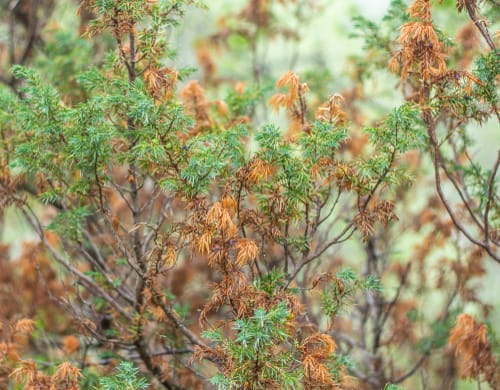Brown bushes can be an eyesore in any landscape, and they can be a sign of a serious problem. While some browning of leaves is natural, excessive browning or dying of shrubs can be a sign of a serious issue. There are many reasons why bushes may turn brown, and it is important to identify the cause to address the issue properly.
Understanding bushes turning brown can be a complex issue, as there are many potential causes. Some of the most common reasons include extreme temperatures, drought, pests, diseases, and soil and watering issues.
Different types of bushes may also react differently to these issues, so it is important to identify the type of bush in question to determine the best course of action.
Key Takeaways
- Brown bushes can be a sign of a serious problem and it is important to identify the cause.
- There are many potential causes of brown bushes, including extreme temperatures, pests, diseases, and soil and watering issues.
- Different types of bushes may react differently to these issues, so it is important to identify the type of bush in question to determine the best course of action.
You shouldn’t miss on these other top posts:
Understanding Brown Bushes
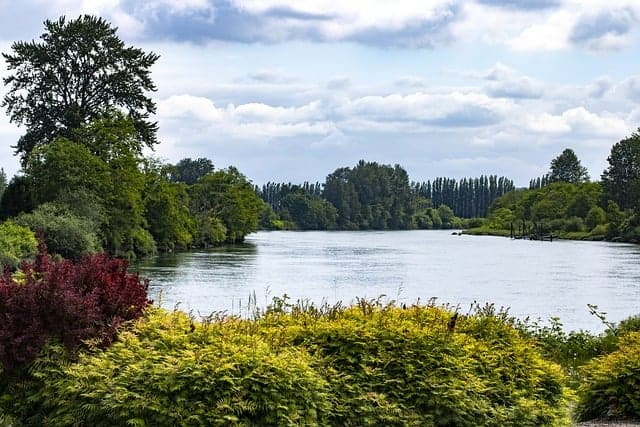
When bushes turn brown, it can be a cause for concern for gardeners and homeowners alike. Brown leaves or branches can indicate a problem with the plant that needs to be addressed. In this section, we will explore the reasons for bushes turning brown and how environmental conditions can contribute to this issue.
Bushes Turning Brown
There are several reasons why bushes may turn brown. Here are some of the most common causes:
Watering Issues: Both over and under-watering can cause bushes to turn brown. Overwatering can lead to root rot, while under-watering can cause the plant to become dehydrated. It’s important to find the right balance when watering your bushes.
Pests and Diseases: Insects like borers or diseases like boxwood blight can cause bushes to turn brown. It’s important to identify the specific pest or disease and take appropriate action to treat it.
Fertilizer Overload: Pouring too much fertilizer into plant beds can essentially burn your bushes by increasing salt levels in the soil. This can cause the plant to turn brown and eventually die.
Drastic Weather Changes: Sudden changes in temperature, humidity, or light can cause bushes to become stressed and turn brown. This is especially true for plants that are not native to the area.
Environmental Conditions
Environmental conditions can also contribute to bushes turning brown. Here are some of the most common environmental factors that can affect your plants:
Weather Conditions: Extreme weather conditions like drought, frost, or heat waves can cause bushes to turn brown. It’s important to monitor weather conditions and take appropriate action to protect your plants.
Soil Conditions: Poor soil quality or soil that is too alkaline or acidic can cause bushes to turn brown. It’s important to test your soil and amend it as needed.
Light Conditions: Bushes that are not receiving enough light can become stressed and turn brown. It’s important to plant bushes in areas that receive adequate sunlight for their specific needs.
Bush Types and Their Reactions
Different types of bushes have different reactions to environmental factors, which can cause brown discoloration. Understanding the specific characteristics of the bushes in your garden can help you diagnose and treat the problem effectively.
1. Evergreen Bushes

Evergreen bushes retain their leaves throughout the year and are typically more tolerant of cold temperatures. However, they are still susceptible to browning due to environmental stressors. Some common evergreen bushes include boxwood, hollies, and azaleas.
Boxwood bushes are popular for their dense foliage and ability to be shaped into various forms. They are generally low-maintenance but can be sensitive to extreme temperature fluctuations, which can cause browning.
Hollies are another popular evergreen bush that can be affected by environmental factors such as drought or waterlogging. Azaleas are known for their vibrant blooms, but they can also suffer from browning due to overexposure to sunlight or lack of nutrients.
2. Shrubs
Shrubs are a diverse group of plants that can include both deciduous and evergreen varieties. They are typically hardy and can tolerate a wide range of environmental conditions. However, they can still be affected by factors such as water stress, nutrient deficiencies, or pest infestations.
Some common shrubs include hydrangeas, lilacs, and viburnums. Hydrangeas are known for their large, showy blooms and can be sensitive to overwatering or underwatering.
Lilacs are prized for their fragrant flowers and can be susceptible to browning if they are not pruned properly. Viburnums are a popular choice for their attractive foliage and can be affected by factors such as soil pH or nutrient imbalances.
3. Other Bushes
Other types of bushes include deciduous varieties that lose their leaves in the fall. These bushes can be more susceptible to browning due to seasonal changes or environmental stressors such as drought or extreme temperatures.
Some common deciduous bushes include butterfly bushes, forsythias, and weigelas. Butterfly bushes are known for their ability to attract butterflies and can be sensitive to overfertilization or pruning.
Forsythias are prized for their early spring blooms and can be affected by factors such as water stress or nutrient deficiencies. Weigelas are known for their colorful blooms and can be susceptible to browning if they are not pruned properly.
Understanding the specific characteristics of the bushes in your garden can help you diagnose and treat the problem effectively. By taking the time to identify the type of bush and the factors that may be causing browning, you can take steps to promote healthy growth and prevent further damage.
Common Diseases and Pests
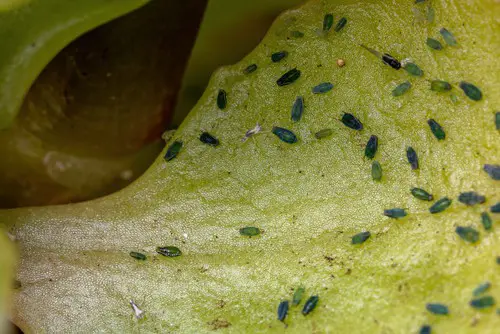
Shrubs turning brown can be caused by a variety of diseases and pests. Identifying the cause of the issue is essential to determine the best course of action to save the plant. In this section, we will discuss the most common diseases and pests that can cause shrubs to turn brown.
Fungal Diseases
Fungal diseases are a common cause of shrubs turning brown. These diseases are caused by spores that can spread through the air or soil. One of the most common fungal diseases that affect shrubs is powdery mildew.
This disease appears as a white or gray powdery substance on the leaves and stems of the plant. Another fungal disease that can cause shrubs to turn brown is boxwood blight. This disease causes the leaves to turn brown and fall off, eventually killing the plant.
To prevent fungal diseases, it is essential to keep the shrub healthy by ensuring it receives enough water and nutrients. Also, avoid planting shrubs too close together, as this can increase the risk of fungal diseases spreading.
Insect Infestations
Insect infestations can also cause shrubs to turn brown. Ants, spider mites, and bagworms are some of the most common insects that can cause damage to shrubs. Ants can create nests at the base of shrubs, which can cause damage to the roots and lead to brown leaves.
Spider mites are tiny insects that suck the sap out of the leaves, causing them to turn brown and fall off. Bagworms are caterpillars that can quickly defoliate a shrub, causing it to turn brown and die.
To prevent insect infestations, it is essential to keep the shrub healthy and free of debris. Regularly inspect the shrub for signs of insect infestations and treat them promptly if detected.
Effects of Weather and Climate
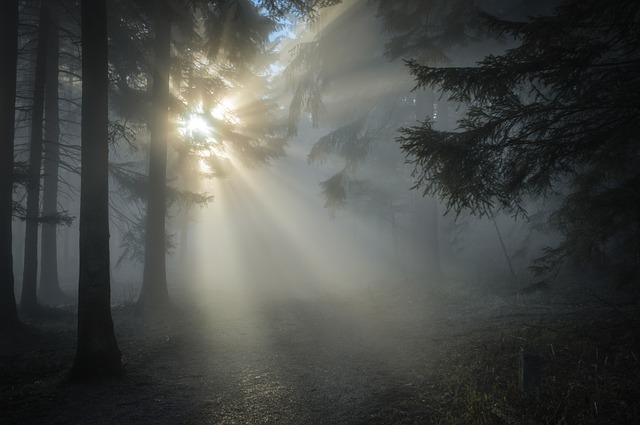
Bushes are susceptible to various environmental factors, including weather and climate. The effects of weather and climate on bushes can range from mild to severe, depending on the intensity and duration of the exposure.
In this section, we will explore the effects of weather and climate on bushes, specifically focusing on winter damage and drought effects.
Winter Damage
Winter damage, also known as winter burn or winter injury, is a common problem that affects many types of bushes. It occurs when bushes are exposed to freezing temperatures, dry winds, and bright sunlight during the winter months.
These conditions can cause the leaves and needles of bushes to dry out and turn brown, leading to significant damage.
To prevent winter damage, it is essential to select hardy bushes that can withstand harsh winter conditions. Additionally, it is crucial to provide adequate water to bushes during the fall months to ensure that they are well-hydrated before the onset of winter.
Covering bushes with burlap or other protective materials can also help to shield them from the harsh winter elements.
Drought Effects
Drought is another environmental factor that can have a significant impact on bushes. When bushes are exposed to dry weather conditions, they can become stressed and begin to wilt. As a result, the leaves of the bushes may turn brown and fall off, leading to significant damage.
To prevent drought effects, it is essential to provide bushes with adequate water during periods of dry weather. This can be achieved by watering bushes deeply and infrequently, rather than providing them with frequent shallow watering.
Additionally, it is essential to mulch around bushes to help retain moisture in the soil and reduce evaporation.
Soil and Watering Issues

Shrubs turning brown and dying can be caused by soil and watering issues. It is important to properly care for the soil and water the shrubs correctly to keep them healthy.
Overwatering
Overwatering can cause shrubs to turn brown and die. When there is too much water, the roots cannot get enough oxygen, which can lead to root rot. Signs of overwatering include yellowing leaves, leaf drop, and a mushy stem.
To avoid overwatering, make sure the soil has good drainage and only water the shrubs when the top inch of soil is dry.
Underwatering
Underwatering can also cause shrubs to turn brown and die. When there is not enough water, the shrub will become stressed and its leaves will turn brown and dry out.
Signs of underwatering include wilted leaves, dry soil, and brown spots on the leaves. To avoid underwatering, make sure the shrubs are watered deeply and regularly, especially during hot and dry weather.
It is important to find the right balance when watering shrubs. Both overwatering and underwatering can cause problems, so it is important to monitor the soil moisture and adjust watering accordingly. Using a moisture meter can help determine when the shrubs need to be watered.
In addition to proper watering, it is important to maintain healthy soil. Shrubs need well-draining soil that is rich in nutrients to grow properly. Adding organic matter, such as compost or mulch, can help improve soil quality and retain moisture.
Pruning and Plant Care
Proper Pruning
Proper pruning is essential to maintain the health and appearance of your bushes. It is important to prune at the right time of year and in the right way to promote new growth and remove dead or diseased branches. Dead branches can attract pests and diseases that can spread to other parts of the plant.
When pruning, it is important to use clean, sharp tools to avoid damaging the plant. Make cuts at a 45-degree angle just above a bud to encourage new growth. Avoid cutting too close to the bud, as this can cause it to dry out. It is also important to avoid cutting too much of the plant at once, as this can cause stress and slow growth.
Plant Health Care
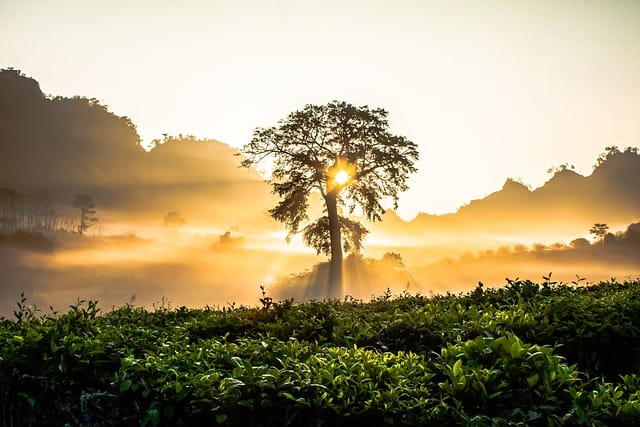
In addition to proper pruning, plant health care is essential to prevent bushes from turning brown. Mulching around the base of the plant can help retain moisture and regulate soil temperature. This can also help prevent weeds from competing with the plant for nutrients.
It is also important to monitor the root system of the plant. Over-fertilization or fertilizer overload can damage the root system and cause the plant to turn brown. Nutrient deficiencies can also lead to brown leaves. Regular fertilization with the appropriate nutrients can help prevent these issues.
Prevention and Treatment
Preventing Browning
Prevention is the best way to avoid brown bushes. Gardeners can take several steps to keep their bushes healthy and green. One way is to avoid over-fertilizing bushes as it can increase salt levels in the soil and burn the shrubs.
Another way is to water the bushes regularly and adequately. Underwatering and overwatering are both causes of shrubs turning brown. Gardeners should also ensure that the soil is well-draining and not waterlogged.
During winter, drastic weather changes can affect shrubs in a sunny, unsheltered spot. If the weather warms up during winter, it tricks the shrub into growing. However, there is unlikely to be enough water for the new growth.
To prevent this, gardeners can cover the bushes with burlap or other protective material. This helps to keep the roots moist and prevent the shrubs from drying out.
Treating Brown Bushes
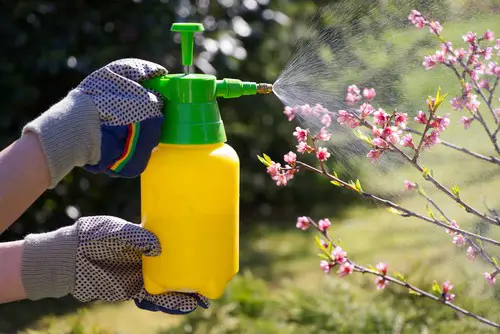
If the bushes have already turned brown, gardeners can take steps to recover them. The first step is to identify the cause of the browning. If it is due to insect infestation, gardeners can use insecticides to get rid of the pests. However, they should ensure that the insecticides are safe for the bushes and do not harm other beneficial insects.
Another way to treat brown bushes is to use anti-desiccant spray. This spray helps to reduce water loss from the leaves and stems, which is a common cause of browning. Gardeners should apply the spray in the fall before the first frost and again in the spring when the new growth appears.
If the bushes are severely damaged, gardeners should seek the help of an arborist. Arborists are trained professionals who can diagnose the problem and provide appropriate treatment. They can also prune the damaged parts of the bushes to promote new growth.
Conclusion
Environmental factors such as heat stress and nutrient deficiency can also cause discoloration in evergreen shrubs. It is important to ensure that shrubs are planted in an appropriate location with sufficient sunlight and soil conditions that support healthy growth.
Maintaining a healthy landscape and yard can also help prevent shrubs from turning brown. Regular pruning and removal of dead or diseased branches can help promote healthy growth and prevent the spread of pests or disease.
Frequently Asked Questions
How do I tell if a shrub is dying?
There are several signs that indicate a shrub is dying. The most common signs are browning or yellowing leaves, brittle stems, and a lack of new growth.
If the leaves are falling off the shrub, it is a clear indication that the plant is not healthy. Additionally, if the bark is peeling off or the roots are exposed, it is another sign that the shrub is dying.
Why is my evergreen bush turning brown in the summer?
Evergreen bushes may turn brown in the summer due to several reasons. One of the most common reasons is water stress. If the soil is too dry, the roots of the plant may not be able to absorb enough water, causing the leaves to turn brown.
Another reason could be pests or disease. Insects like borers or a disease like boxwood blight can cause shrubs to change color.
How do I stop evergreens from turning brown?
To stop evergreens from turning brown, it is important to identify the underlying cause. If the cause is water stress, it is important to water the plant deeply and regularly.
If the cause is pests or disease, it is important to treat the plant with the appropriate pesticide or fungicide. Additionally, it is important to prune the plant regularly to promote healthy growth and remove any dead or diseased branches.
Why do outdoor plant leaves turn brown and crispy?
If outdoor plant leaves are turning brown and crispy, it is likely due to water stress. This could be caused by either overwatering or underwatering the plant.
It is important to check the soil moisture regularly and adjust watering accordingly. Additionally, it is important to ensure that the plant is getting enough sunlight and nutrients.
Why are the leaves on my burning bush turning brown?
The leaves on a burning bush may turn brown due to several reasons. One of the most common reasons is water stress. If the soil is too dry, the roots of the plant may not be able to absorb enough water, causing the leaves to turn brown.
Another reason could be pests or disease. Insects like spider mites or a disease like powdery mildew can cause the leaves to change color.
Can brown shrubs be saved?
Whether or not brown shrubs can be saved depends on the underlying cause of the browning. If the cause is water stress, it is possible to save the shrub by watering it deeply and regularly.
If the cause is pests or disease, it is important to treat the plant with the appropriate pesticide or fungicide. However, if the plant is too far gone, it may not be possible to save it.

Hey, I’m Lisa and I’ve been an avid gardener for over 30 years. I love writing, talking and living in the garden! Feel free to connect with me on my socials below

